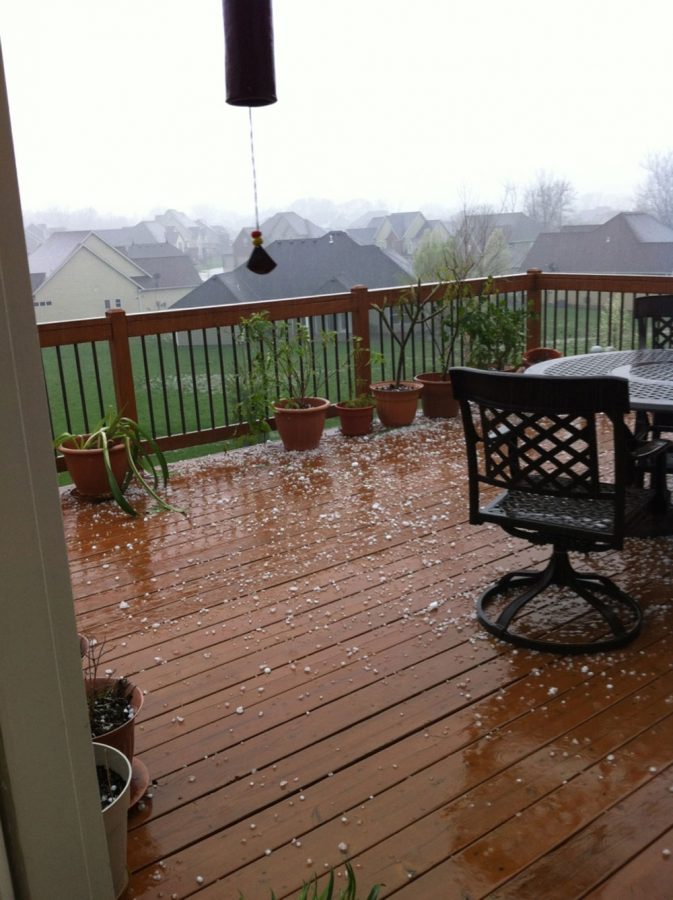Recent experiences have brought the concept of terror back into the forefront of the news and students’ minds. A recent severe weather storm, the Boston Marathon bombing and other incidences introduced unwanted fear into many lives, while others are continually haunted by past memories and the fear of the unknown. Ironically, still others seek the thrill and adrenaline of fear purposefully, watching horror movies and similar media. These different causes of fear may vary, but the results of bone-chilling terror largely stay the same.
[tabgroup]
[tab title=”Terror Weather”]
[heading style=”1″]Natural disasters [/heading]
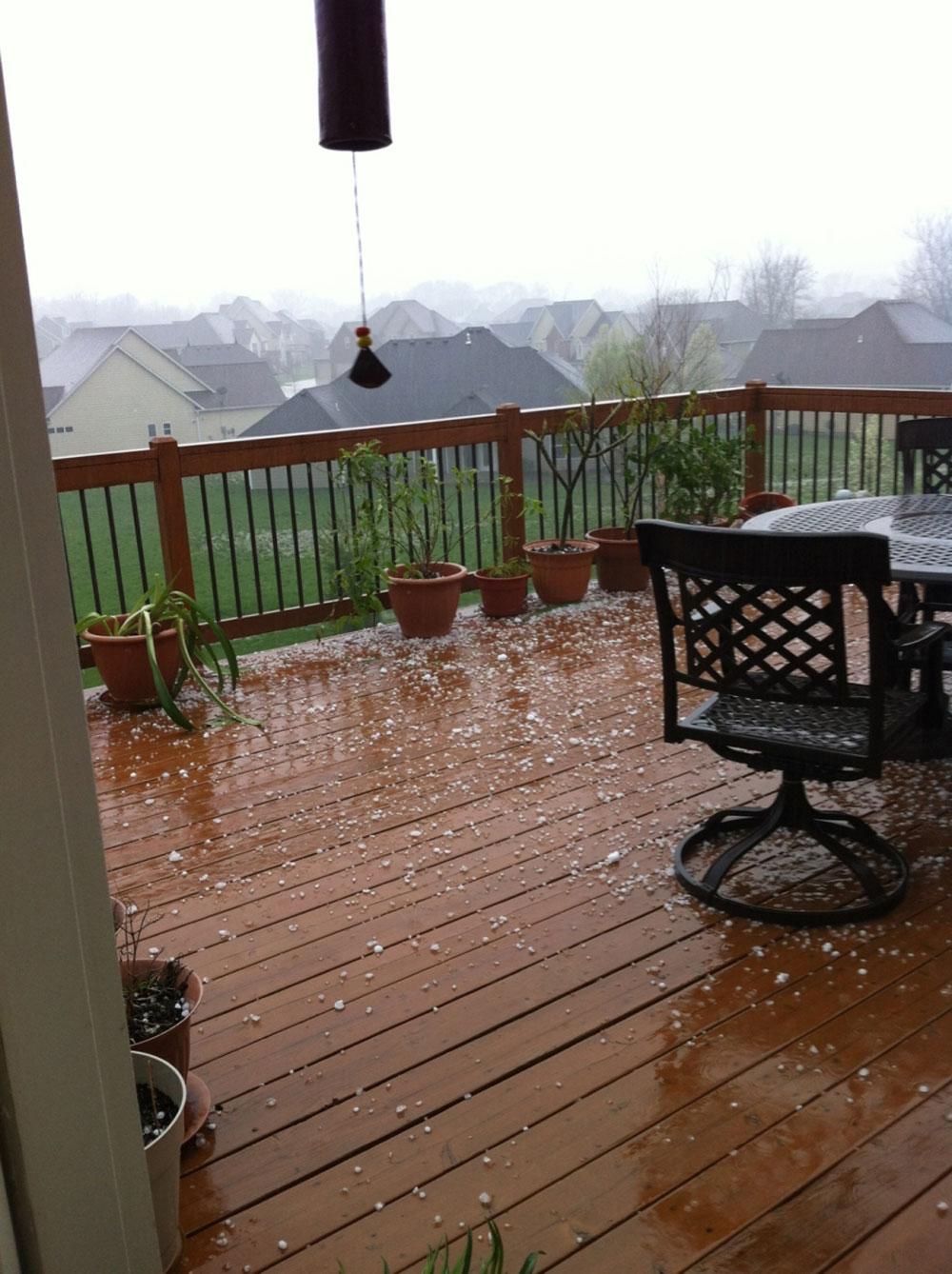
Last Wednesday, April 17, Columbia residents and those of the surrounding areas of mid-Missouri faced an unexpected tornado warning scare. As the sky darkened to a greenish hue, the following signs of a possible tornado occurred as expected.
Though a tornado did not pass through Columbia last week, the hail that descended from the sky surprised various individuals, including senior Drew Floyd. The lack of warning before the storm caught Floyd off-guard on his way home from track practice.
“I kept looking up at the sky, hoping the hail would wait until I got home. When the first hailstone hit my windshield, I was surprised and kind of scared that it was going to dent my hood or break a window because they were about the size of golf balls,” Floyd said. “I usually try to stay off the roads when the weather gets bad, but this time I got caught coming home when it hit, so this [was] definitely the worst conditions I’ve ever driven in.”
This unusual weather condition instilled a unique sense of fear in Floyd, since he typically did not find terror in a natural disaster or storm. But in the moment, the uncertainty of what was exactly going on, and if he would even make it to his destination, caused Floyd to become scared during his trek home.
“The rain and hail were really coming down, and I couldn’t see very far in front of me,” Floyd said. “Some of the roads were flooded, and I kept hydroplaning. The entire way home, I kept wondering what I’d do if the hail broke my windshield or I slid off the road.”
Despite the “tornado-like” conditions that occurred last week, according to www.sema.dps.mo.gov, one of the single deadliest tornadoes in U.S. history touched down in Joplin, Missouri on May 22, 2011. The tornado ranked as an F5 storm, the category for the most powerful tornadoes, with wind speeds in excess of 200 miles per hour.
The tornado struck at 5:41 p.m. in Joplin that day and destroyed or heavily damaged thousands of buildings in a six mile long and three-fourth mile wide section of Joplin, killing more than 150 people.
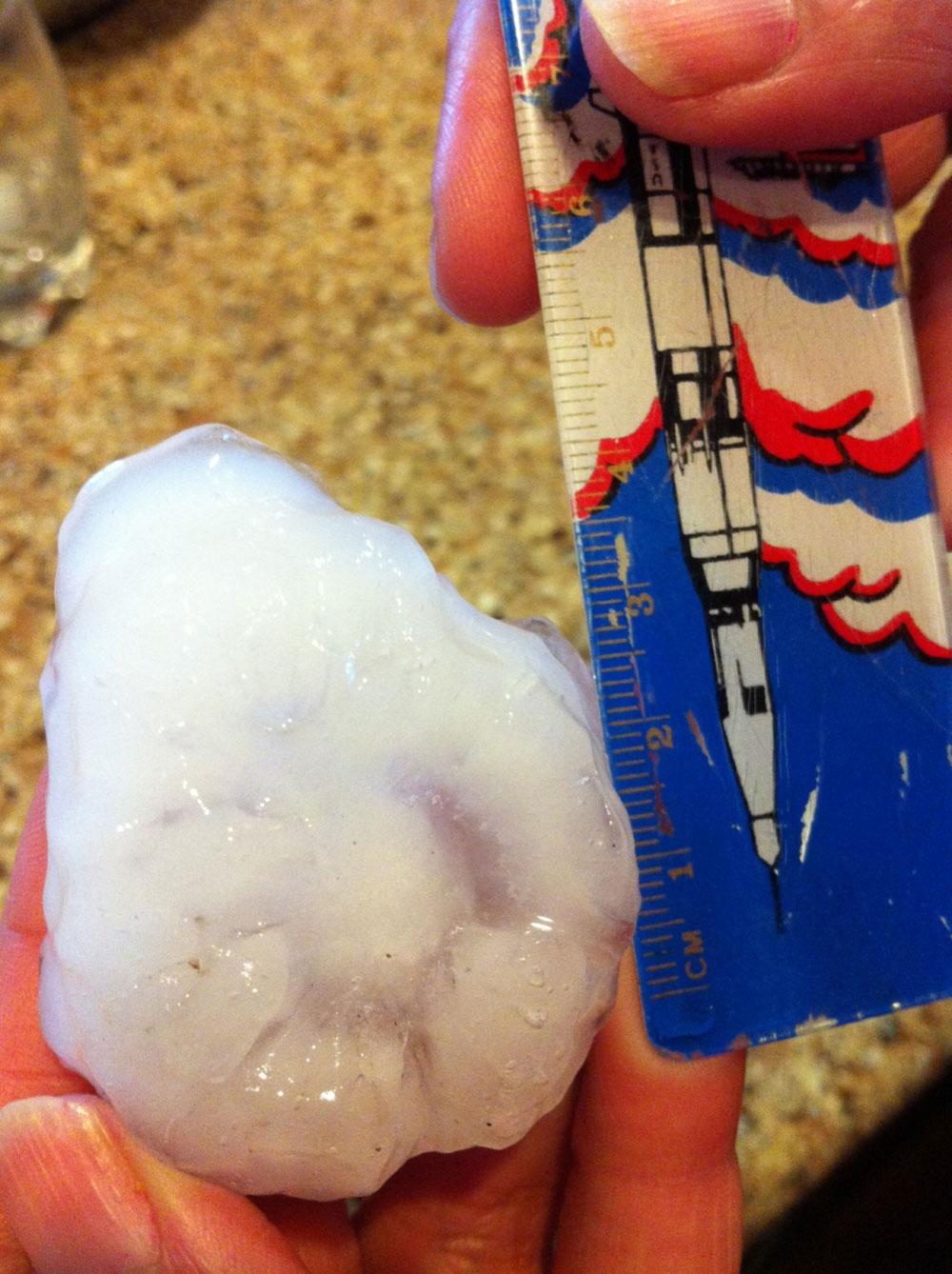
To Joplin sophomore Stefan Paic, who had a first-hand experience with the devastating natural disaster, the aftermath of the tornado turned out to be much more devastating than the actual tornado itself.
“The most terrifying thing was probably the sight of what we never thought was possible. Driving through the town, which was totally normal an hour ago, and suddenly trying to wrap my mind around the now one-by-six mile stretch of matchwood,” Paic said. “It was also terrible to see a bloodied, injured truck driver lying by his burning truck or twisted steel beams, piled cars and a chair embedded in the side of the hospital.”
Although Joplin faced serious physical damage to both the buildings and its citizens, in Paic’s opinion, the emotional damage far outweighed anything else.
“It was the most devastating time emotionally because it was when so many people realized how they had literally lost everything,” Paic said. “It was when they realized that, although they may have survived, they may have lost a friend, neighbor or loved-one.”
After the people of Joplin lost so much in this terrifying tornado, Paic has learned that terror and fear can be felt in any situation, even in the case of severe weather. The experience in such a severe condition, and living through such a fearful situation, has taught Paic and many other Joplin residents to take precaution in any possible disaster.

“Well, every time there’s a thunderstorm or a tornado watch or warning, and there a lot of them this time of year, we actually pay attention now when the sirens go off. In our house, we have a tornado escape plan with essentials like water and canned food stocked up,” Paic said. “I feel like I’m most prepared [after such a disaster] emotionally because in the aftermath, neighbor was helping neighbor, and the people of Joplin unified into the cause of helping one another recover.”
www.columbia.k12.mo.usAnd Joplin isn’t the only area taking precautionary steps in case of a weather calamity. According to the Columbia Public Schools website at
, “if a tornado warning is issued before or during dismissal time, all buses will be held, and students will remain in their respective buildings until an all-clear is issued by the school district. However, if buses are already in route during a tornado warning, the driver is instructed to find the closest school or appropriate shelter and evacuate students to a safe location.”
Because of the detrimental conditions he faced during and after the Joplin tornado, Paic believes that any precautions that one could take will help out immensely in the long run to avoid any unexpected terror that occurs in any natural disaster.
“It’s most important to take the warnings of a possible disaster seriously,” Paic said. “One warning may be the only one before all communication is lost.”
By Manal SalimAdditional reporting by Daphne Yu and Brittany Cornelison
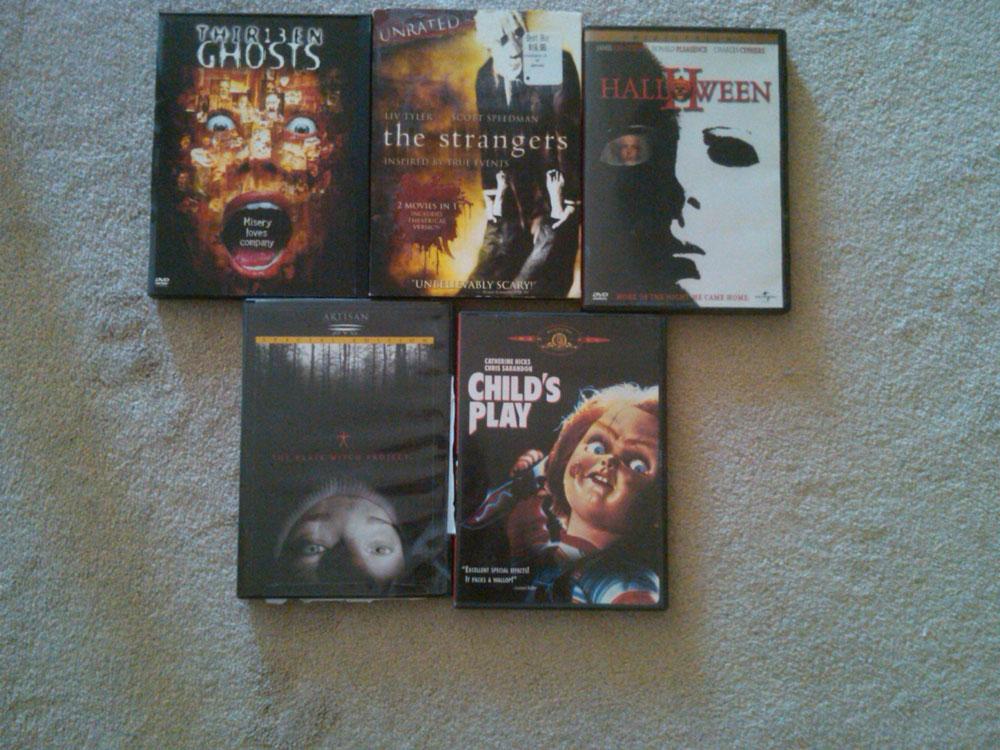
[/tab][tab title=”Horror Movies”] [heading style=”1″]Horror movies provide enjoyable sense of terror[/heading]
yourbusiness.azcentral.comThe concept of horror movies is an odd one. The idea of people paying their hard-earned money to be scared seems counter-intuitive, yet according to
, horror films made over $413 million in the United States in 2012. Senior Blake Ward, who is a big horror movie fan, explains why, despite the fact that humans often spend much of their lives trying to avoid frightening and dangerous situations, he and many others enjoy them so much when they are on film.
“It’s like you know it’s going to be scary, so you’re ready,” Ward said. “It’s a controlled environment. It gives you a rush that only comes from being scared.”
accessscience.comHorror movies are so enjoyable because they offer the biological arousal, or rush, of fear without actually being in danger, according to
. One study on the website identified three factors that were important in the appeal of horror films to males aged 15-45: the excitement generated by the film, the wish to see the destruction found in horror films and the satisfying resolution usually found at the end of the film.
Good horror movies have different effects on different people. Some people shake and shiver in fear; some people’s hearts start thumping, and some have the hair on the back of their neck stand on end. These responses are all results of the physical excitement that comes from fear. In order to get these exciting, anxious feelings, people need to be scared, and movies offer a controlled, safe situation in which to feel terror.
There are many components that go into getting this reaction from the audience though, and not all horror movies fulfill these, senior Muhamed Khenissi said. He explained how people are scared by different things, but there are a few certain things that every horror movie must have to be truly scary and not just another gore-fest.
Horror movies need “a believable plot to be scary,” senior Muhamedali Khenissi said. “The fact that what I am watching could happen or may have happened is frightening.”
nativeremedicies.comAnd indeed, in agreement with Khenissi’s opinion,
states that horror movies need to be believable to be scary. According to the website, the feeling of fear is an instinctual response to potential danger. So if a person feels like the situation in the film could never happen, he/she senses nothing threatening about it and therefore does not feel fear.
nativeremedies.comCharacters also play a big role in the creation of fear in film,
says, because a big part of a horror movie being believable, and therefore scary, is the characters that are on screen. If the viewers care for the characters on screen and their well-being, they will be more likely to be scared for them, not wanting to see them suffer, creating the aroused, excited feeling that horror movie fans crave.
The same is true of the antagonist or villain of the film, Khenissi said. If the viewer believes the bad guy could actually exist, the situation is that much scarier. This is why people tend to find movies based around human antagonists scarier than those based around mystical creatures or otherworldly entities.
“An intelligent antagonist who is able to think and plan, but doesn’t have any of the values a normal member of society, would [be frightening],” Khenissi said. “People are so crazy nowadays that almost anything short of vampires is believable.”
PsychoAnother aspect of successful horror movies is the creation of moments of true shock and suspense, senior Grace Gabel said. If the scares are too obvious and easy to predict, viewers can brace themselves, and if no scares come, there is no payoff, and viewers will get bored and disconnected. Some of the most acclaimed horror movies, such as
The Texas Chainsaw Massacre,
The Strangers,and
combine a believable plot and characters with thrilling scares but also contain a suffocating, tense atmosphere. The sense of there being no escape from danger sets some horror movies apart from the pack. When there is no escape from danger, and no clear solution to the problem, the situation becomes much more frightening because there is no let up for the audience.
“Pop-outs and thrills are what make a horror movie actually scary,” Gabel said. “I need to not expect what’s going to happen. In order to scare me, it needs to be spontaneous. I just like the random amount of excitement it brings when something will randomly just [jump out] on screen and scare you to death.”
By Sam MitchellCommentary
[/tab][tab title=”Terror of the Night”] [heading style=”1″]Night time adventure incites fear[/heading]

Of all the things that rack our brains, we tend not to dwell on the things that scare us. We keep our thoughts focused on the happy things so that we aren’t terrorized by the fears that can easily consume our lives. However, these fears can’t be avoided completely, and they tend to reappear and rekindle at times when we least expect it.
Ever since I was young, I’ve had a fear of the night. Not the darkness itself but the trouble that follows it. You hear stories all the time about murders, kidnappings and fights that happen in these late, shady hours. So, I’ve always watched my back when my surroundings were shaded, in continual preparation for a possible attacker.
This past November, I took a trip to San Antonio with the Journalism staff, where I had planned on having the time of my life, exploring the tourist shops, walking along the River Walk, and most of all, enjoying the time off of school. However, my happiness was disturbed when my fear of the night rudely emerged.
During my time in this foreign city, my friends and I made a very stupid decision. At around 10 p.m. one evening, we stepped out of the hotel doors onto the eerie Texan streets. Though it was an innocent idea, taking a trip to a local burger joint for a delayed dinner, it was definitely not the smartest one, knowing my omnipresent fear of these late hours.
Throughout the day, we walked the streets peacefully, because in the back of our minds, we knew that we were out in the broad daylight, where anyone could see us if something bad were to happen. However, night brought about a whole new atmosphere, one where we could be scooped up by the shadows and no one would know.
Everywhere I looked, I felt as though someone was watching me, scoping me out, trying to see what would be the best way to kill me. The situation wasn’t any more comforting when considering that the two people I chose to go with were also girls, naive teenage girls at that. We were about as vulnerable as it got.
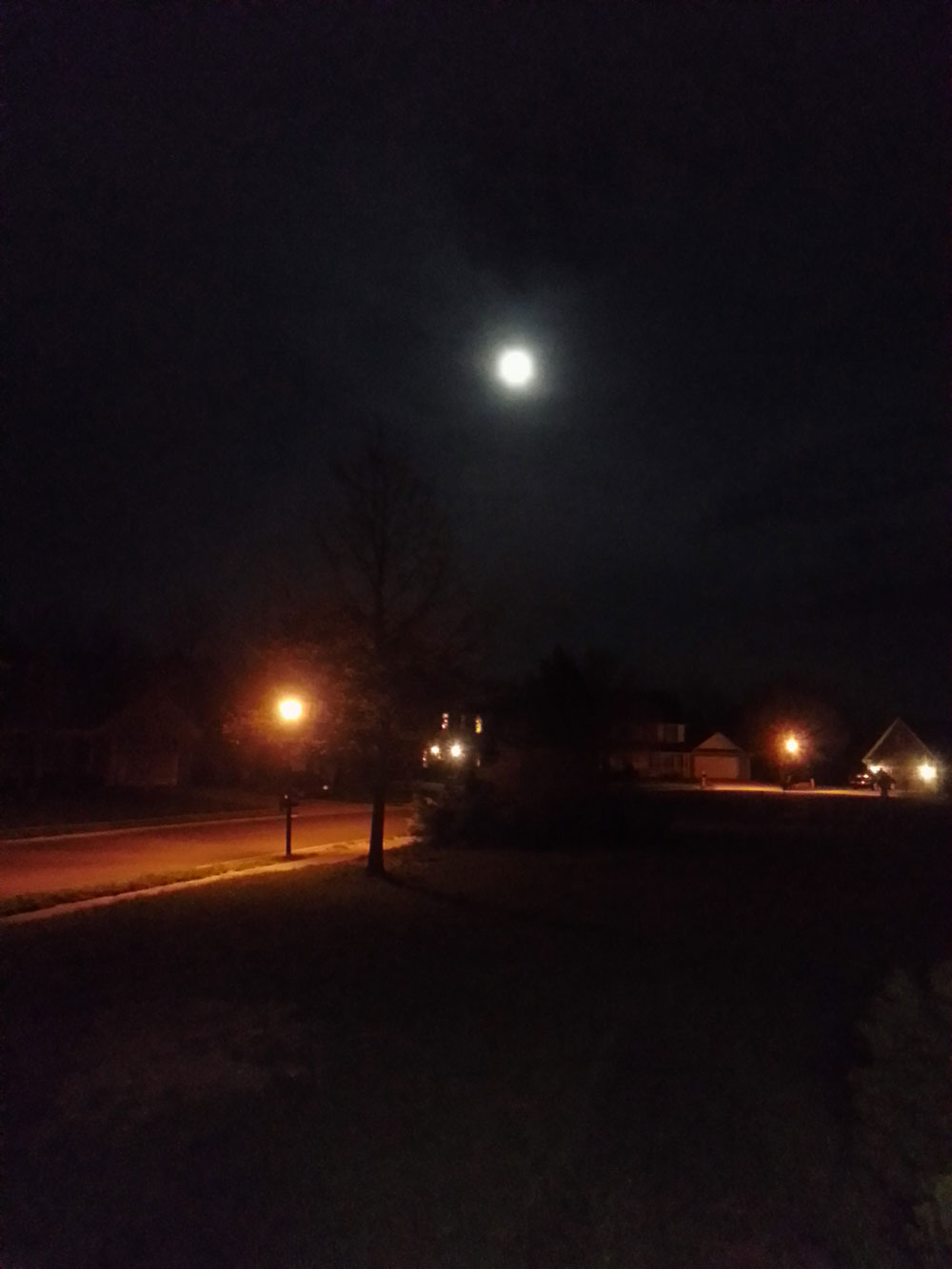
You could easily point us out as tourists, and our aura reeked of terror. We were pretty calm as we left the hotel, but the further away we walked from our home base, the more we realized that we were no longer safe. We became aware of the suspicious groups of people lining the streets at the late hour and determined that our decision to leave the safety of our hotel was not a very well-thought-out plan. We scarfed down the food so quickly that I’m sure if we weren’t so focused on being scared to death, we would have thrown it right back up.
Our two-block mission back to the hotel was at about twice the speed in which we approached the restaurant. The blackness of the night became extremely evident, making me anxious, thinking that someone could jump out from around any corner. Though we were never approached on our journey, we got quite a few intentful stares thrown in our direction. Although I don’t know if these looks could have resulted in a kidnapping or some other sort of dangerous situation, I had never been more terrified in my life.
I can remember a time when I loved to spend my evenings outside, running around the field, staring at the constellations and taking in the sights and sounds of the peaceful darkness. I’d make wishes on shooting stars and run my bare feet through the wind-chilled grass. Some of my fondest memories are from this nighttime scenery.
However, as I’ve grown older, I’ve become more aware of the troubles that lurk in the darkness. As much as I’d like to return to my days of having pure thoughts, free from worries, I know that my understanding of the possible danger is what keeps me safe.
My naive mindset as a child helped me to experience the night as I never will again. But I won’t give up my innocent memories, because I know that they remind me of what the night feels like when the terrors of this world are absent.
By Brittany Cornelison
[/tab][tab title=”Students’ View”] [heading style=”1″]Students recount tales of nighttime terror[/heading]
Suryanshi Rawat, sophomore
“We were all asleep in our cabins at [the] bio-camp, and there was a thunderstorm going on, and our teacher told us to get all of our clothes and shoes and flashlights ready in case we had to go to a little shelter if there was a tornado. It was pouring outside and thundering and lightning, and then at 4 a.m. … there’s this huge clap of thunder, and every single person in every single cabin wakes up … it was terrifying. We thought something fell over outside or it hit the cabin or something.”
Satey Yates, sophomore
“I was sleeping in my sister’s room. … We had just moved in there literally two days ago, and I stayed in my sister’s room laying on a mattress and … I woke up in the middle of the night and heard whispering. It was so creepy, and it was my sister — she was in bed whispering, but she didn’t take a breath for like five minutes; she just kept whispering … and then she started flopping on the bed. It was so freaky. … I didn’t want to wake her up because I didn’t want her to stab me or something, so I just went and put my head under my pillow and tried to go back to sleep … and I’ve never been in her room since because it [was] so scary.”
Rachel Doisy, junior
“I was in New York City, and it was about 1 o’clock in the morning, and my friend Josh and I were walking around trying to find this coffee shop, and we passed all these gangster-like people, and they were really scaring-looking, and they said, ‘Hey baby, come here,’ and I was like ‘No!’ I grabbed Josh, and I was like, “Josh is my boyfriend!’ Oh my gosh, it scared me so bad because we were in a really sketchy part of New York, and we were just walking around at 1 o’clock in the morning. I thought I was going to get raped or something.”
Allison Ryberg, senior
“I was with one of my friends and we had planned to go to Panera for dinner. We knew there was going to be a storm but we didn’t think it would be anything bad. … The sky was turning like a really dark grey … but we still decided to get food from the drive through, which probably wasn’t a good idea, but we had already driven out there, and [we thought that] a few more minutes couldn’t make too huge of a difference. So we got our food and [my friend] is like freaking [out] because the sky was going kind of crazy, and it had started raining, so she decided to speed home. … We came close to wrecking multiple times, so I was scared she was going to end up killing me. … And the tornado sirens were going off so … after a very scary ride … We finally made it back to [the Christian Campus House] and went into the basement.”
By Brittany Cornelison
[/tab][tab title=”Terrorism”]
[heading style=”1″]Recent Boston bombings evoke fear of a similar situation[/heading]
It always happens in a matter of seconds. Planes crash, bombs explode, guns go off, buildings go up in flames and smoke fills the air. The lives of innocent people are changed, and the lives of many are taken. Acts inciting terror, whether accidental or purposeful, have changed the very face of the United States.
Last week, on April 15, 2013, two bombs exploded near the finish line of the Boston Marathon, ultimately killing 3 people and injuring more than 260 others, according to cnn.com. On April 18, two suspects were identified, and on April 19, the city of Boston was put on lockdown as police officers chased Dzhokhar Tsarnaev about the 20-block area of Watertown. At 7 p.m. on April 19, Tsarnaev was hospitalized and taken into custody. He was charged with using a weapon of mass destruction resulting in death, and additional charges are suspected.
Senior Brad Meister was scrolling through his Twitter feed when he first heard of the bombing. Suddenly, Twitter started “going crazy” as news websites and onlookers posted pictures, videos and updates describing the horrific scene.
Meister was immediately reminded of events which occurred two years ago, when Meister’s father was hospitalized for a brain hemorrhage. He realized that the terror the Boston bombing victims were experiencing was very similar to his own.
“I was talking to my dad five minutes before he had his brain bleed,” Meister said. “It was terrifying. My dad, who I was talking to five minutes ago, was perfectly fine and then suddenly he was in the ICU with a good chance of dying. You feel helpless. I learned that you can’t take anything for granted.”
Boston was left in horror as lives were taken and changed so quickly, in a matter of minutes. The fear experienced by the citizens of Boston stretched throughout the United States as suspicion of further attacks spiked. The U.S Postal Service was put on alert as screening equipment reported the possible presence of the toxin ricin in letters sent to three different senators and to President Barack Obama himself. “Suspicious packages” were reported all throughout the country. Even Columbia readied itself for any possible emergencies.
“You’ve seen the emergency assistance that is with Boone County,” Columbia Police Department Public Information Officer Latisha Stroer said. “They travel all over when major accidents happen. So they have seen different catastrophes as far as weather — tornados, hurricanes, flooding. … So they’ve seen different mass casualties. They’ve learned from their experiences from going place to place. So I think we will be prepared as much as you can be for anything [like the Boston Marathon bombing].”
However, the Boston incident was only one in a long stream of terrorist attacks to happen across the world and in the United States. Only 12 years before to the Boston bombing, on September 11, 2001, two planes crashed into the World Trade Center, one plane crashed into the Pentagon and yet another plane crashed into a field in Pennsylvania after its passengers overcame the aircraft’s terrorist hijackers. As a result of the events, almost 3,000 people were killed.
World Studies teacher David Graham was teaching a class when a fellow teacher burst into his room to announce a plane had crashed into the World Trade Center. The lesson pulled to an abrupt halt as teachers and students rushed to get TVs set up in classrooms so that students could watch the events. There was no Twitter to “go crazy” and alert people of the news. There was no live coverage on the Internet and even the TV on the screens was fuzzy and input was poor. Students were left in anxious anticipation, waiting to hear more.
“Some people were super pissed off. Some people kind of felt like America had put itself in that position by some of their previous actions around the world, and some people were just pretty much incredulous,” Graham said. “It was overwhelming for some people, and there were some who just said, ‘Wait and see what happens, let’s just wait and see what comes about.’ … I think everybody was kind of on edge. You didn’t know what was going to come next.”
Following the acts of 9/11, security measures across the United States changed dramatically. Passports had to be reissued, significant limits were put on passports, metal detectors and increased security systems were implemented in airports, the number of bags that could be taken onto an aircraft were reduced, security cameras were installed, and limits were even put on toiletries such as hand cream and shampoo. Columbia itself was forced to take a hard look at its own security measures.
“After 9/11, even in the police department — it tightened up security,” Stroer said. “You had to be in uniform to come in, or you had to have a badge around your neck at all times. So certain things did change in the Columbia Police Department.”
September 11 left its stain everywhere. People were afraid of further attacks or anything that could be used for further attacks. Anything that could be potentially dangerous in the United States was looked at with a scrutinizing eye. Even nuclear power plants significantly changed their policies and procedures after the planes crashed into the World Trade Center. According to University of Missouri professor Bill Miller, the Missouri University Research Reactor (MURR), along with other power plants across the nation, created new vehicle barriers, implemented a new mail reception facility for inspecting packages, installed security cameras, edited evaluation plans, and some plants even added “pill boxes” where armed guards could stand watch 24 hours a day, seven days a week.
However, even with the increased safety methods, there are accidents. Last week, on April 19, a fertilizer plant in West, Texas, exploded, killing 14 people and injuring more than 200 others, according to cnn.com. While the incident wasn’t an act of terrorism, it still left a significant mark on the people of the United States, who began to fear the danger of power plants.
Miller, who works at MURR, stressed that these bad accidents are caused by poor design and are not at all a frequent occurrence. Incidents such as the Texas accident and Chernobyl disaster in 1986 were caused by little concern for proper safety measures, Miller said, and even so, only 31 personnel at the Chernobyl plant were killed by radiation. The estimate of the increase in cancer likelihood to the exposed population of the Chernobyl disaster is around 0.0005% — very, very low.
“Despite many concerns about nuclear reactors and a few bad accidents, the nuclear industry is still far, far safer than any other industry,” Miller said. “The MURR is much smaller than a power reactor and has many of the same safety features of larger plants, including a 2-foot-thick concrete containment building.”
But even with all the additional safety and security, some Americans still feel it’s just not enough. Issues and debates over gun control after the Sandy Hook Elementary shooting have skyrocketed. Stadium operations officials from all 30 major league baseball teams are meeting to discuss tweaking security at games after the Boston bombing, according to www.courier-journal.com. A school shooting earlier this year, and now an act of terrorism and an accidental plant explosion, both occurring in the same week, are quite enough to set America’s teeth on edge. Whether it be fear of terrorism or fear of terror itself, fear is rampant in the hearts of U.S. civilians.
After the accumulation of these recent events, some students are saying that schools across the country should increase their safety measures and rules. Many high schools have installed metal detectors at the doors, while others maintain a locked door policy throughout the day. Still, some worry that the lax, open-campus policy at RBHS is not safe enough for its students.
“I think that schools need to be more proactive about making schools safer with a higher security,” Meister said. “Because you honestly could just walk in the front door of Rock Bridge without anyone asking who you are.”
However, Maus believes that the people and the security system running RBHS have everything under control. While there was little change in school policy after the Sandy Hook shooting and the Boston Marathon bombing, Maus says that the teams devoted to student safety are as prepared and vigilant as ever.
“I don’t think the school system does anything too reactionary to one event,” Maus said. “I think the goal is always to make the school as safe and secure as possible, and safety for students, whether it’s physical violence, mental violence, emotional — any of those things — is the number one priority for students to [be able to] learn. If they don’t feel [safe], they can’t learn. … So I think schools do a very good job of not overreacting to any one event but do always have the safety of students and staff at the forefront of what they’re doing.”
While Maus understands the desire for security and the increase in fear, he believes there is very little to fret over. Terrorist acts and disastrous accidents are unusual, infrequent occurrences that should be taken seriously but should not control daily life.
“If something were to happen, if we had a big marathon and something like [the Boston Marathon bombing] were to happen,” Maus said, “I think we would be very efficient in responding.”
By Lauren Puckett
Additional reporting by Alyssa Sykuta
[/tab][/tabgroup]












































































